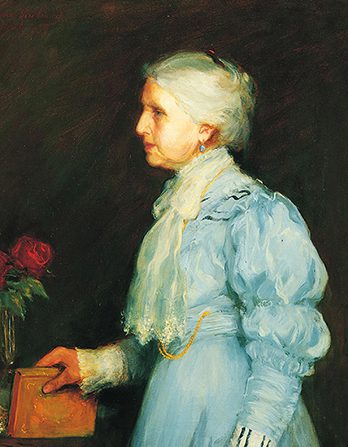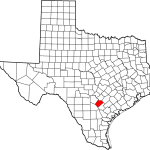
(Portrait by Lee Greene Richards, from LDS Media Library)
Among other things, my wife and I belong to a monthly reading group that meets to discuss both Mormon- and (usually) non-Mormon-oriented books. Officially titled but seldom actually called the “Gadianton Polysophical Marching and Chowder Society,” it was founded many years ago by a group of young Latter-day Saint faculty and graduate students associated more or less with the University of California at Santa Barbara. But it long ago moved to Utah (where we were invited to join it) as its members accepted positions at Brigham Young University, the University of Utah and other places in the area. The original members are all retired now and more than a few have passed on, but it still continues.
Last night, we discussed Carol Cornwall Madsen’s massive new biography Emmeline B. Wells: an Intimate History, about the most famous and significant Mormon women’s leader of her era. (She was born in Massachusetts in 1828 and died in Utah in 1921.) One of our number has been working for many years on editing and annotating Emmeline’s diaries for publication.
A convert to Mormonism, Emmeline arrived in Nauvoo, Illinois, in the spring of 1844, not very long before the murder of Joseph and Hyrum Smith by an anti-Mormon mob.
When she stepped off the riverboat at the city’s upper landing, she was quite surprised at the large group of people crowded on the bank to greet the disembarking passengers. She had been hoping that the Prophet Joseph Smith might be there, and that a companion who had already met him would point him out to her.
Joseph was indeed there, but Emmeline needed no one to point him out. She noticed one tall figure in the crowd who seemed, to her, clearly distinguished from all the others. Later, she often recalled that first encounter with him:
His majestic bearing, so entirely different from any one I had ever seen . . . was more than a surprise. It was as if I beheld a vision. . . . Before I was aware of it he came to me, and when he took my hand, I was simply electrified — thrilled through and through to the tips of my fingers, and every part of my body, as if some magic elixir had given me new life and vitality. . . . The one thought that filled my soul was, I have seen the prophet of God, he has taken me by the hand.
Carol Cornwall Madsen, Emmeline B. Wells: an Intimate History (Salt Lake City: University of Utah Press, 2017), 42.












